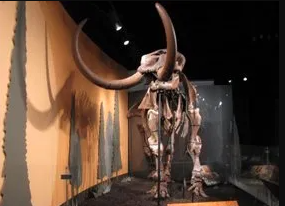
Fred The Mastodon
September of 1998 was when Dan Buesching made a big discovery. He was busy digging for peat on the family farm when he found something very unusual. It turned out to be the tusk, approximately 12 feet tall, about 9 to 10 feet long, of a large male mastodon.
Dan and his family contacted IPFW, who helped them turn the tusk over to the Archaeology Survey from the Department of Anthropology and Sociology. That’s when they started their full scientific excavation and were able to recover nearly 90% of the fossilized remains.
The Buesching’s mastodon is now known as “Fred the Buesching Mastodon.” It is well preserved and complete which makes it a significant discovery. IPFW and the University of Michigan conducted research and they concluded that the site may be a Paleo-Indian food cache which is the first of its kind in the State of Indiana.
They donated the fossil to the Indiana State Museum where they have it on display. You can also visit the University of Michigan, Ann Arbor, and at Science Central in Fort Wayne, Indiana to see the casting.
UPDATE:
Fred the Buesching Mastodon has been dead for about 13,000 years and he's only been out of the ground for about 22 years. But, he still has stories to tell to help us understand the past.
The popular mastodon at the Indiana State Museum recently helped an international group of scientists discover more about the movement of these Ice Age giants in the first large-scale genetic study of American mastodons.





